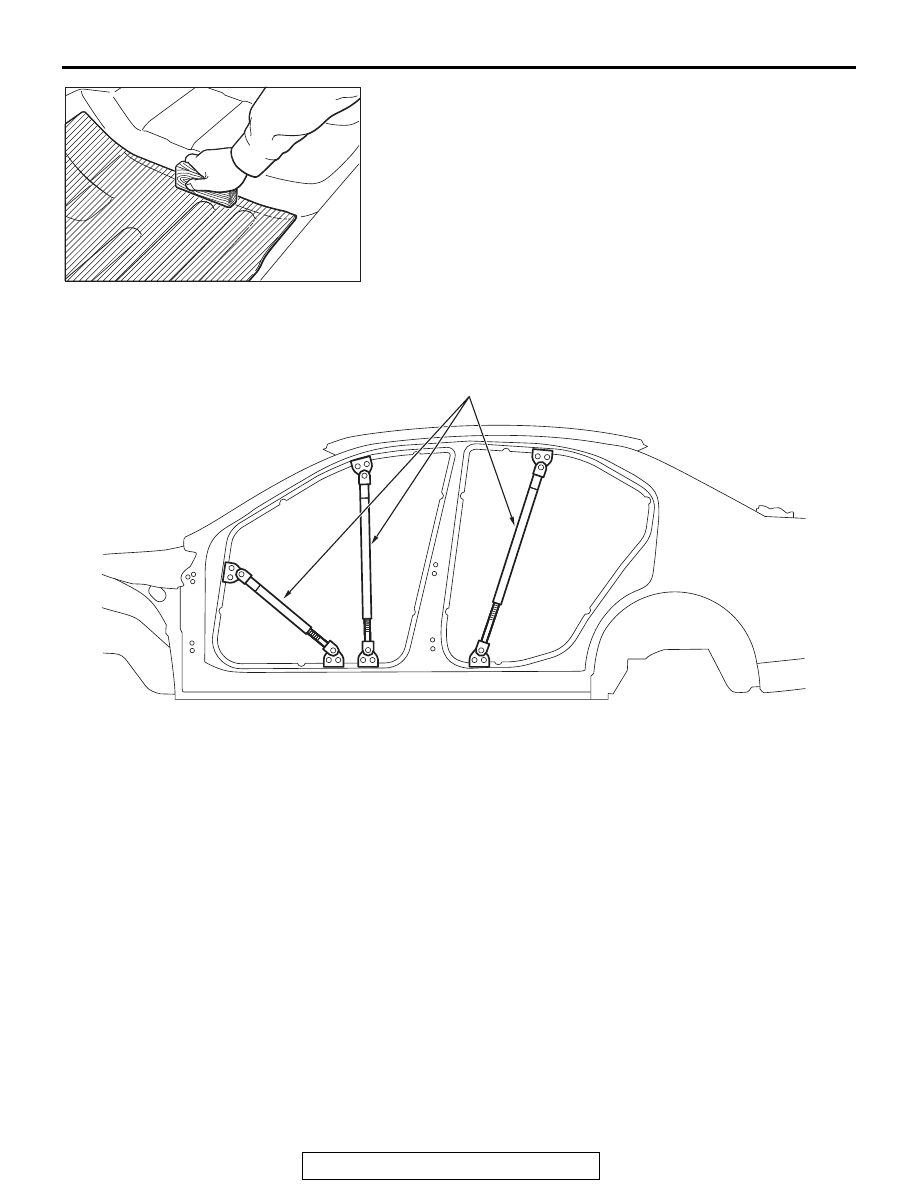Mitsubishi Evolution X. Manual - part 7

BODY REPAIR
TSB Revision
BASE OF BODY REPAIR
9-25
2. Align the silencer layer in the position where it is to be
installed, and then press it down with a roller or a block of
wood so that it adheres well.
NOTE: An infrared light can also be used to heat both the
silencer layer and the body panels (be sure to wear gloves).
POSITIONING DIMENSIONS FOR OPENINGS
M4090010000045
When replacing the panel of the opening of the front
pillar, center pillar and other openings, make a point
to securely bite the poltapower, etc. so the position of
the opening is not off-center. Upon assembling,
adjust the opening dimensions to the standard speci-
fications and then weld.
AB200099
AB200100
Porta power
AD